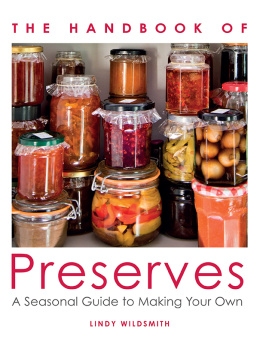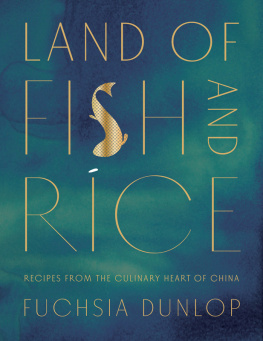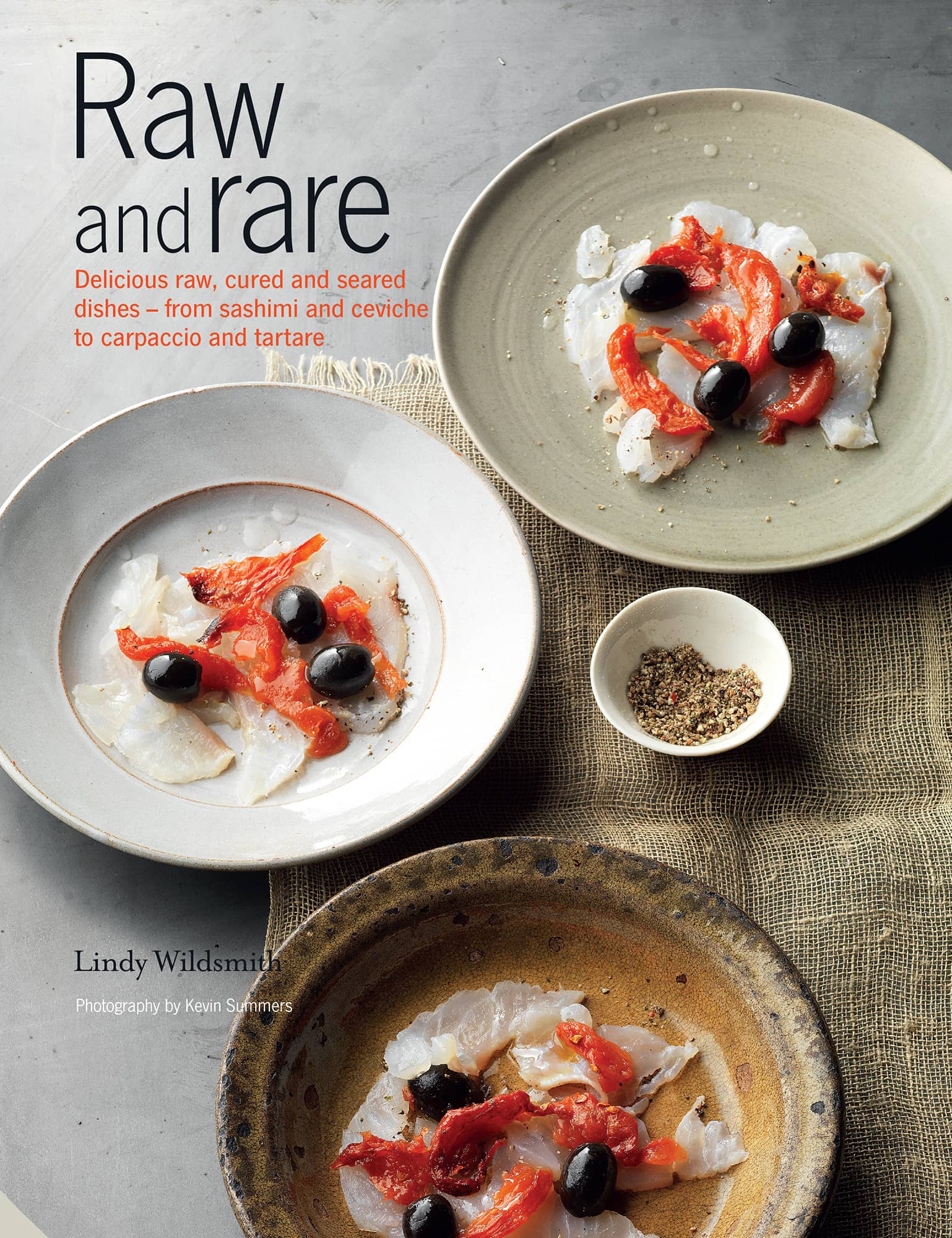For John
Raw and rare
Delicious raw, lightly cured and seared dishes from sashimi and Cebiche to carpaccio and tartare
Lindy Wildsmith
Photography by Kevin Summers

First published in 2017 by
Jacqui Small LLP
7477 White Lion Street
London N1 9PF
www.quartoknows.com
Text copyright
2017 Lindy Wildsmith
Design, layout and photography copyright
Jacqui Small 2017
The authors moral rights have been asserted.
All rights reserved. No part of this book may be reproduced, stored in a retrieval system or transmitted, in any form or by any means, electronic, electrostatic, magnetic tape, mechanical, photocopying, recording or otherwise, without prior permission in writing from the publisher.
Publisher: Jacqui Small
Senior Commissioning Editor: Fritha Saunders
Managing Editor: Emma Heyworth-Dunn
Designer: Maggie Town
Editor: Lucy Bannell
Production: Maeve Healy
Digital edition: 978-1-91112-759-8
Hardcover edition: 978-1-91025-415-8
A catalogue record for this book is available from the British Library.
Introduction
IF YOU HAVENT YET TRIED RAW FISH AND MEAT, you may wonder what all the fuss is about you may even find the idea worrying but raw meat is not bloody, and raw fish is not fishy. Funny, that! Instead, if raw food is new to you, think of the flavour and texture of cooked fish or meat, then think of the taste and silky feel of their cold-smoked equivalents; raw is just a step away from the cold-smoked texture we are used to in smoked salmon. Now, think cooked vegetables versus raw vegetables or cooked fruits as opposed to fresh fruits and you may begin to imagine what a culinary treasure house awaits within these pages. Once you have tried raw food, youll wonder what took you so long to come around to it. Raw food is light, refreshing, naturally sweet, reviving and satisfying. And, indeed, healthy.
However, this is not intended as a health book, but as an invitation to discover some of the worlds most varied, taste bud-teasing and interesting culinary traditions, that have been enjoyed around the world for hundreds even thousands of years. Japan has sashimi, that reflects the seasons; South American cebiche (often spelled as Cebiche) displays passion, colour and flavour; Italy has crudo; and France and Germany have tartare, all dishes that mirror the riches, style and sophistication of a broad culinary heritage. As people have shifted from continent to continent, from island to island, these raw food traditions have spread and evolved, creating new versions in adopted lands, using whatever ingredients were to hand.
Few people doubt the nutritional benefits of eating raw fruits and vegetables, but many are more sceptical about consuming raw fish and meat. However, these raw proteins have been eaten for millennia; in ancient times, in order to survive, and, in more recent times, for the pure pleasure of it. They are still enjoyed today by communities all over the world, wherever the tradition has lingered.
It is documented that, back in the first millennium, the people of Japan lived notably long lives, reaching eighty, ninety and even one hundred years of age, eating a diet of raw food and soup. They ate vegetables, fruit and nuts, and side dishes taken from a large range of raw fish and seafood, or wild game such as boar, deer, hare and duck. Fish kept the brain young, while meat aided growth and maintained health.
Whether you like to eat your fish, meat, vegetables and fruit raw and merely anointed or marinated; or seared, grilled (broiled) or blanched; perhaps lightly salted, smoked or pickled; there is something in Raw and Rare for everyone.
Sashimi is one hundred per cent raw fish, meat or poultry, filleted, sliced with extreme precision and served with dipping sauces and shredded daikon (mooli). It may be argued, however, that cebiche is not raw at all. The citric acid in the citrus fruits used in those preparations fundamentally change the proteins in the fish and meat to which they are added, in a process called denaturation. During this operation, the normally twisted and folded protein molecules are unravelled into less convoluted shapes. They lose their original nature, or become denatured.
Heat also denatures proteins; we call it cooking. High concentrations of salt denature proteins; we call this salting. Acetic acid in vinegar denatures proteins; we call that pickling. The acidity in wine denatures proteins; we call it marinating. Citrus juices denature proteins; we call this cebiche.
The meat and fish recipes in this book start with the raw experience, but they do not stop there. You may love fish, but dont fancy it raw, and there is no need to miss out; where possible, I have given instructions for cooking fish lightly before adding it to a dish. Seafood such as prawns (shrimp) and lobsters, squid and octopus are generally best lightly steamed or poached before eating, even if they are guaranteed straight from the sea (though I also give a fine recipe for raw langoustines here that is definitely worth trying). The dishes range from completely raw, through marinated, cured and smoked, to lightly cooked, so there are plenty of alternatives. But remember: anyone that enjoys fish and meat knows that to get the best out of it the flesh should be seared on the outside while retaining the moisture on the inside, which should remain rare. Overcook it at your peril!
Then there are salads and raw vegetable concoctions and dressings; a mighty store of pickles from Italy, Scandinavia, Japan, Germany and the UK to accompany fish or meat; and, to complete the picture, a colourful range of seasonal fruit platters with which to end your meal.
With this book, I am not asking you to change your diet, but to enhance it by enjoying a whole raft of thrilling new experiences, plus receiving the benefit from time to time of consuming the full raw power of nature, undiminished by cooking.
Fish and seafood
Getting started: fish and seafood
The chances are that if you are interested in preparing and eating raw fish you are already a fish lover and use a trusted fish shop or counter. If not, find one! Stay with it and dont be shy about using the fishmonger: ask their advice. Here are a few basics you should know, for the best results.
Choosing fish and seafood













